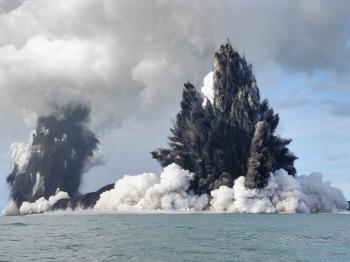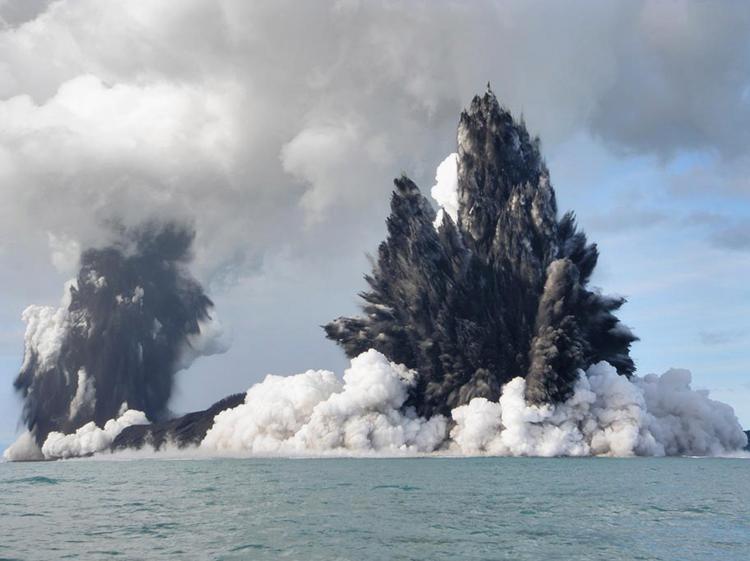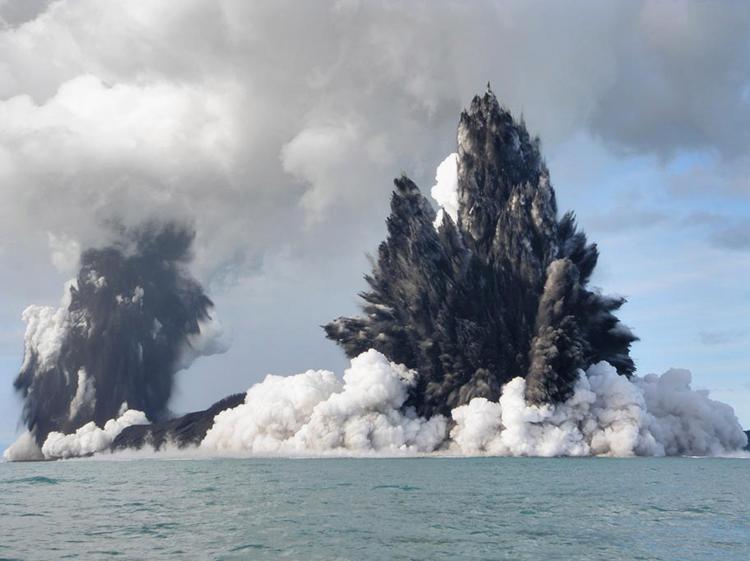A large submarine volcano off New Zealand’s coast has collapsed by more than 100 metres, sending debris to the ocean floor.
Research by The National Institute of Water and Atmospheric Research (NIWA) has shown that the undersea volcano “Rumble III” on the Kermadec ridge 200 km north east of Auckland, has dropped in height by 120 metres over the last 2 years.
According to the Niwa website, Rumble III is one of more than 30 big submarine volcanoes on the Kermadec Arc. They form a jagged chain that ascends from the ocean floor, with Rumble III volcano larger than Mount Ruapehu.
Marine geologist Richard Wysoczanski told the New Zealand Herald that the recent collapse was caused by an eruption some time in the last two years.
“It’s a huge amount of debris - if you can imagine that falling off the top of Mt Ruapehu, which is a similar size [to Rumble III], then you get an idea of the drop.”
Mr. Wysoczanski said that within the last ten years there have been numerous undersea volcanic eruptions and activity. He also said that these volcanoes as well as the non-volcanic ridges could cause landslides potentially generating a tsunami that could impact New Zealand.
Dr Geoffroy Lamarche NIWA principal scientist said that their research shows the seabed is more active than was previously thought.
“We don’t want to be scaremongering here, but definitely any large displacement of (the) seafloor will pull the water down.
“At the surface it will also generate a wave, and this collapse, we know because we’ve mapped it, this collapse is looking south-west, which is directly toward the New Zealand coast,” he told Radio New Zealand News.
Research by The National Institute of Water and Atmospheric Research (NIWA) has shown that the undersea volcano “Rumble III” on the Kermadec ridge 200 km north east of Auckland, has dropped in height by 120 metres over the last 2 years.
According to the Niwa website, Rumble III is one of more than 30 big submarine volcanoes on the Kermadec Arc. They form a jagged chain that ascends from the ocean floor, with Rumble III volcano larger than Mount Ruapehu.
Marine geologist Richard Wysoczanski told the New Zealand Herald that the recent collapse was caused by an eruption some time in the last two years.
“It’s a huge amount of debris - if you can imagine that falling off the top of Mt Ruapehu, which is a similar size [to Rumble III], then you get an idea of the drop.”
Mr. Wysoczanski said that within the last ten years there have been numerous undersea volcanic eruptions and activity. He also said that these volcanoes as well as the non-volcanic ridges could cause landslides potentially generating a tsunami that could impact New Zealand.
Dr Geoffroy Lamarche NIWA principal scientist said that their research shows the seabed is more active than was previously thought.
“We don’t want to be scaremongering here, but definitely any large displacement of (the) seafloor will pull the water down.
“At the surface it will also generate a wave, and this collapse, we know because we’ve mapped it, this collapse is looking south-west, which is directly toward the New Zealand coast,” he told Radio New Zealand News.





